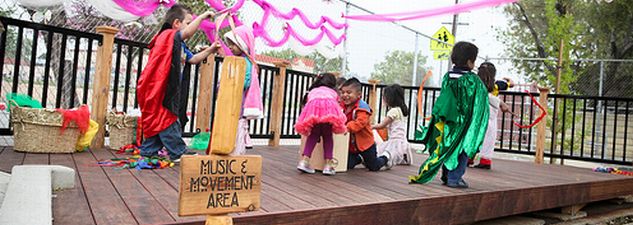Music
Professional Development Session
Format:Mixed model, 1 hour interactive session; Prior to the session: read selected state publication pages and articles. During the interactive session, participants will discuss classroom environments, materials, and planned activities to support the development of music skills.
When children develop an awareness and knowledge of music elements, they progress in their understanding and ability to control the elements for personal musical expression. Although early childhood music education is primarily about introducing musical sounds and holistic experiences, enriched learning occurs when the child has an understanding of and ability to manipulate the music elements of rhythm, melody, form, loudness/softness, temp, timbre, articulation, and style. (PCF, Vol. 2, p. 63) Prior to the session, participants will read selections from state publications and read the articles. During the interactive session, participants will discuss classroom environments, materials, and planned activities to support the development of music skills.
Resources
 | State PublicationsCalifornia Preschool Learning Foundations, Volume 2, pp. 11-14 and 23-24 |
 | Articles and chaptersCopple, C. and S. Bredekamp. Developmentally appropriate practice in early childhood programs serving children from birth through age 8, p.177 section on Music and Movement. Kemple, K. M., Batey, J. J., and L. Hartle. Music play: Creating centers for musical play and exploration. Young Children, July, 2004. NAEYC. Kim, J. and H. M. Robinson. Four steps for becoming familiar with early music standards. Young Children, March, 2010. NAEYC. Ohman-Rodriguez, J. Music from the inside out: Promoting emergent composition with young children. Young Children, July, 2004. NAEYC. Pica, R. Make a little music. Young Children, November, 2009. NAEYC. |
 | PowerPoints |
 | Handouts
|
 | Streaming Video |


